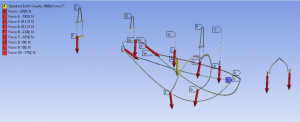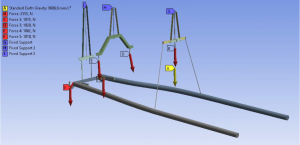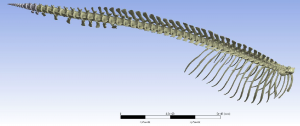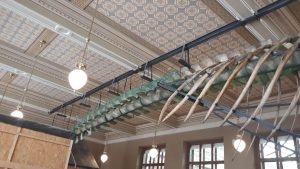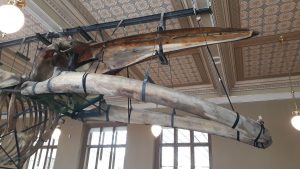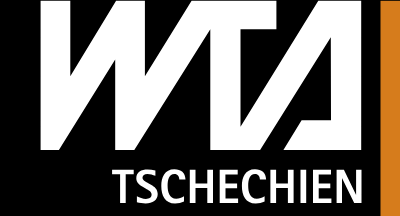What does removing the whale’s jaws do to the rest of the skeleton?
The first step was to assess the effect of jaw removal on the rest of the skeletal remains. The action was planned in such a way that there would be no unpredictable movements that would impair the exhibit. Due to the fragility of the model, laminate duplicates were applied in place of the jaws, which also required a static assessment.
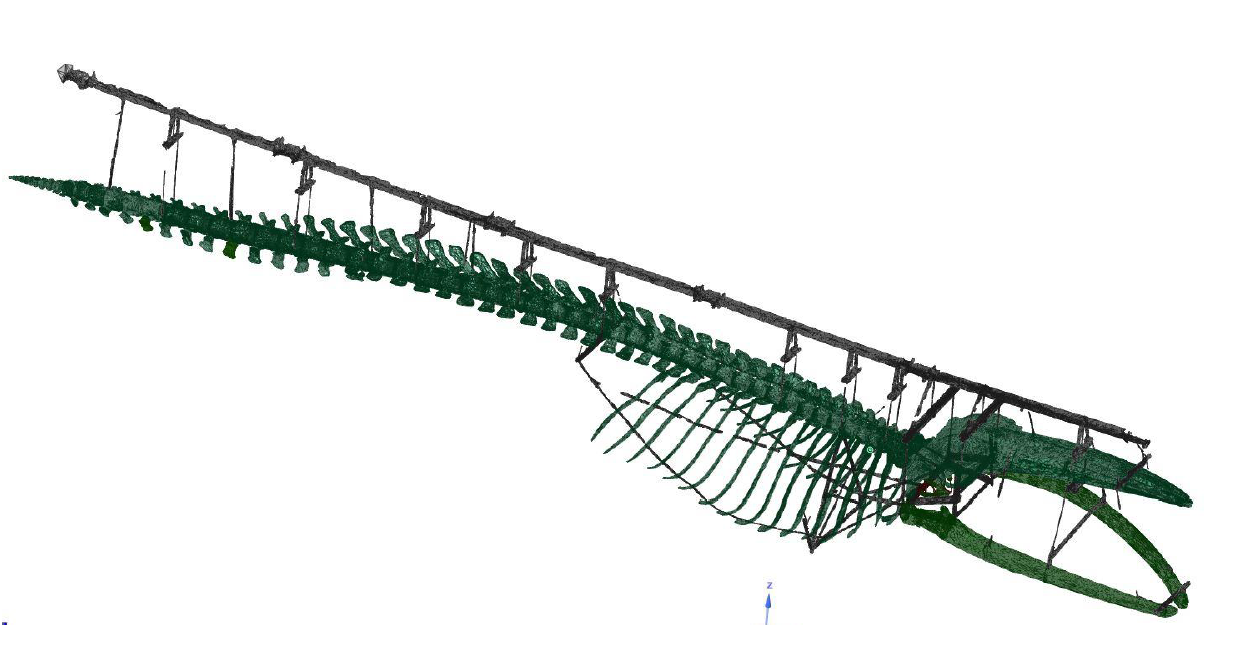
The next task of the workers was to assess the new design of the suspension system based on the original support structure where the skeleton stood on a stand on the floor. Changes were mainly made to the suspension of the skull and jaws, the way the ribs are spread and the geometry and position of the main hinges of the body to the structure under the ceiling.

Numerical simulation of the giant skeleton
To facilitate the work, the company Barbucha studio, s.r.o. modeled a 3D scan of the skeleton and provided it to the staff of the Klokner Institute of the CTU who created numerical simulations based on it. The following facts were taken into account during the work:
- The first hanging of the skeleton took place in 1888 in the Náprstek Museum.
- The skeleton was then placed on a low steel structure standing on the floor.
- Since 1893, the whale skeleton has been a dominant feature of the National Museum in Prague.
- In 1967, the skeleton was hung on a cross member which was placed under the ceiling structure. This structure has served until the present day.
What did the newly designed suspension look like?
The new hinges consisted of steel profiles and rods and the thickness of the material was usually around six mm (steel strength class S235 = steel used for supplementary and non-load-bearing structures).
In some places, the model has been simplified, which led to stress concentration that, however, has no effect on the actual structure. For elements that differ only slightly from each other, the most heavily loaded element of the given group was always assessed (this mainly concerned simple hinges between individual vertebrae).
